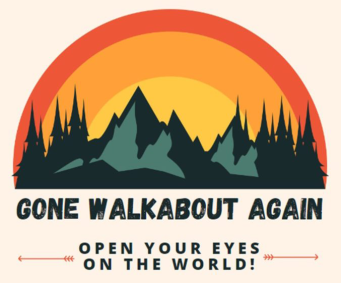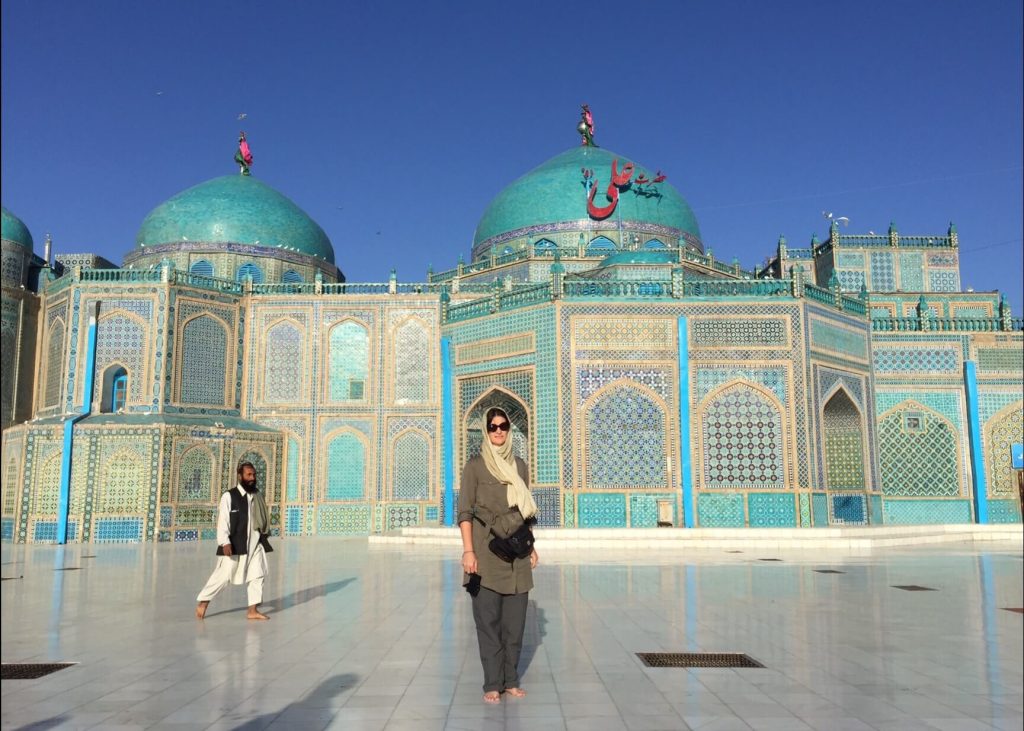
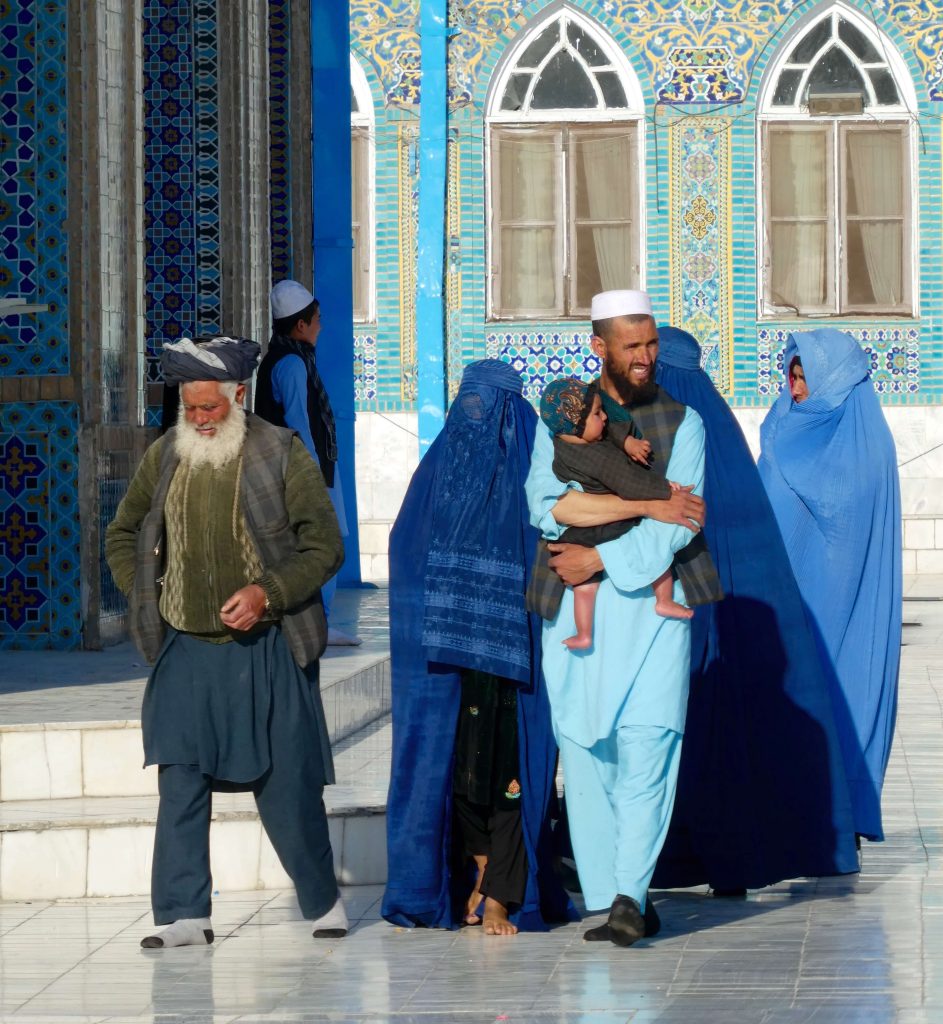
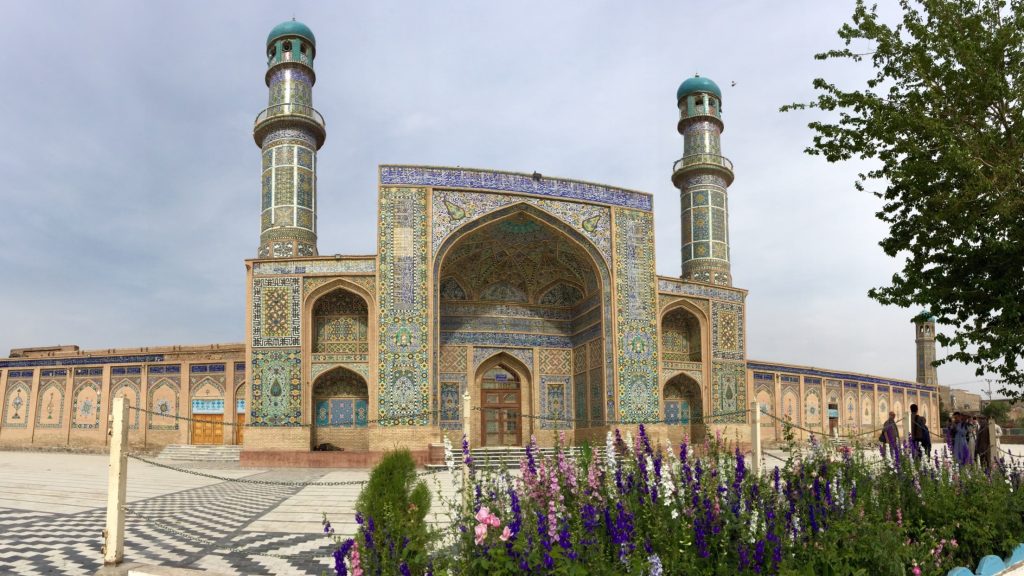
My trip has taken me to the north of Afghanistan to Mazare Sharif, a city near the Uzbekistan border and renowned for its fine carpets. It boasts a magnificent shrine to Ali (the cousin of the Prophet Mohammed). Simply breathtaking Islamic architecture the shrine is surrounded by an acre of white marble courtyard. Five turquoise domes sit atop the shrine and the entrance portals are carved with a series of arches and flanked by towering minarets. The entire surface of the shrine is covered with blue, green and white tiles painted with geometric and floral designs. Hundreds of white doves surround the complex and local legend has it that any new pigeon that arrives in Mazare Sharif turns itself white within a month so holy is the shrine.
I have also journeyed to Herat in the west near the border with Iran. Herat claims the title for centre of culture in Afghanistan. It was heavily influenced by Persian culture which saw poetry, music and painting flourish under the patronage of the Timurid Empire in the 15th and 16th centuries. It was during this period that a huge mosque complex, shrines and madrassa (school) were built that was likely the greatest architecture the Islamic world had ever known. Inspired by such designs the Mughal Emperor would build the Taj Mahal more than a century later in India. But alas little of the architecture of Herat has survived antiquity, much less the artillery of modern conflicts.
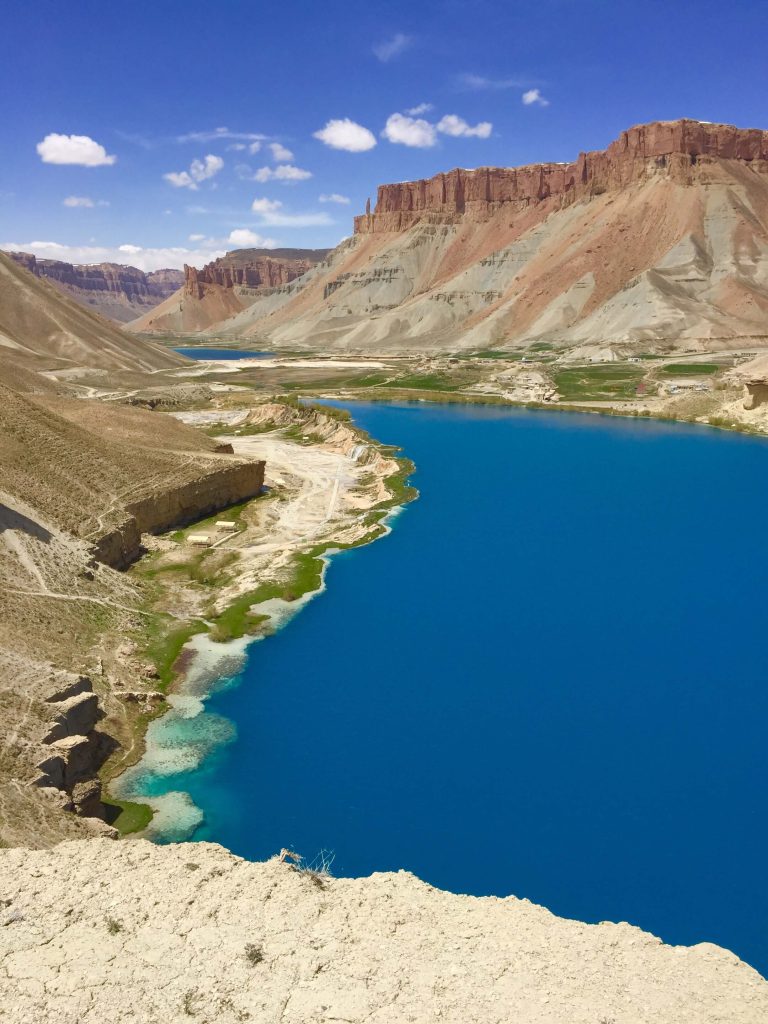
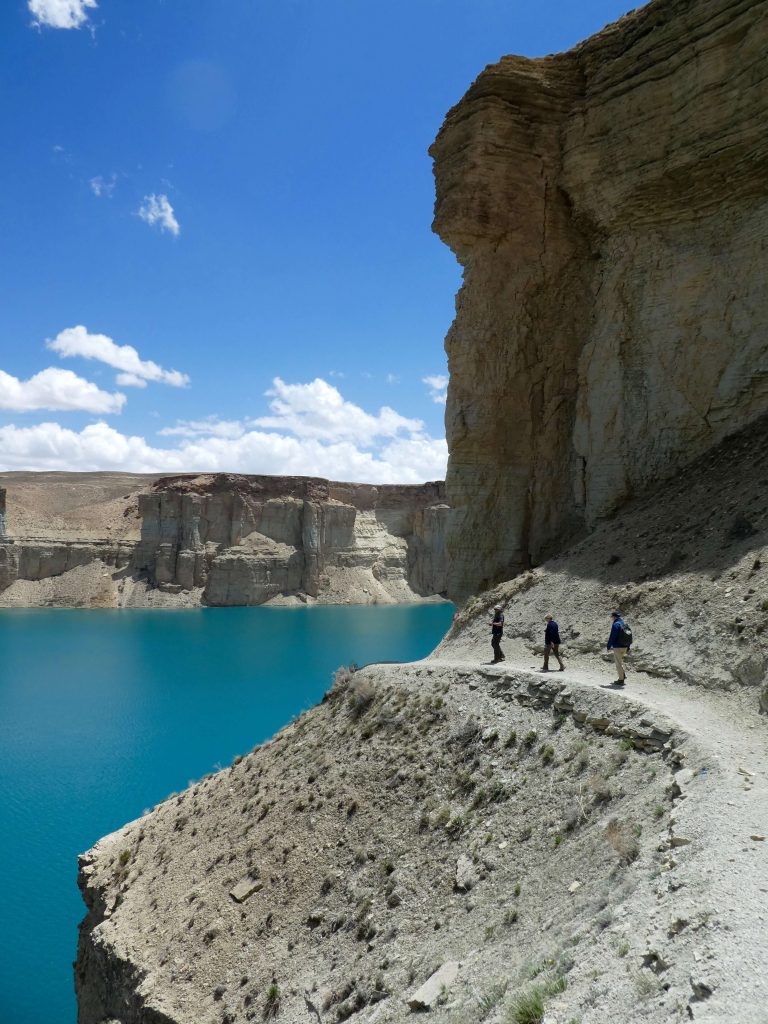
Afghanistan has some glorious landscapes that have also satisfied my outdoor cravings. In central Afghanistan high in the Hindu Kush mountain range is a series of lakes set in a canyon of sheer white and pink sandstone cliffs. The lakes are such an astonishing blue colour that your eyes believe there must be some form of trickery. Although the phenomenon is related to the mineral content of the lakes the beguiling blue is somewhere between turquoise and sapphire. It is surely one of the unsung natural wonders of the world.
An essay on traveling in Afghanistan wouldn’t be complete if I skirted the issue of conflict. To be truthful Afghanistan has been a prized piece of real estate on the Silk Road trading route through antiquity. Whether it was Alexander the Great defeating the Persians in Bactria in the 3rd century BC and taking his Afghani bride Roxana of Bactria or the marauding Mongols under Genghis Khan in the 13th century. More modern meddling came with the British & Soviets trying to expand their Imperialist aspirations (and failing) in the 19th century. The successful Soviet invasion and occupation was sprung in the 1980s which gave rise to local tribal and regional resistance forces commanded by the Mujahideen ‘warlords’. The ‘Jihad’ or battle for the Muslim nation drew international attention. As part of their Cold War strategy against the USSR America covertly funded arms supply and training camps for the ‘jihadist’ fighters. The steely Afghanis eventually forced the retreat of the Russians in 1989. However the infighting amongst the warlords, the emergence of extremist Islamic groups such as the Taliban and continued foreign (read ‘Western’) intervention has not allowed for a unified, peaceful Afghanistan yet.
The reality of life here is a heavy police and military presence. Police with AK47 machine guns are on every second street corner, 4 wheel drives are accessorised with tow bars, bull bars and machine gun mounts; sensitive areas such as the airport are surrounded by armoured vehicles and military manning antiaircraft guns and rocket launchers. It’s travelling with your heart in your mouth but doing our best to avoid looking like foreigners and respecting the local customs and traditions has allowed me to travel uneventfully and to be received warmly across a wonderful country. Tashakor Afghanistan!
